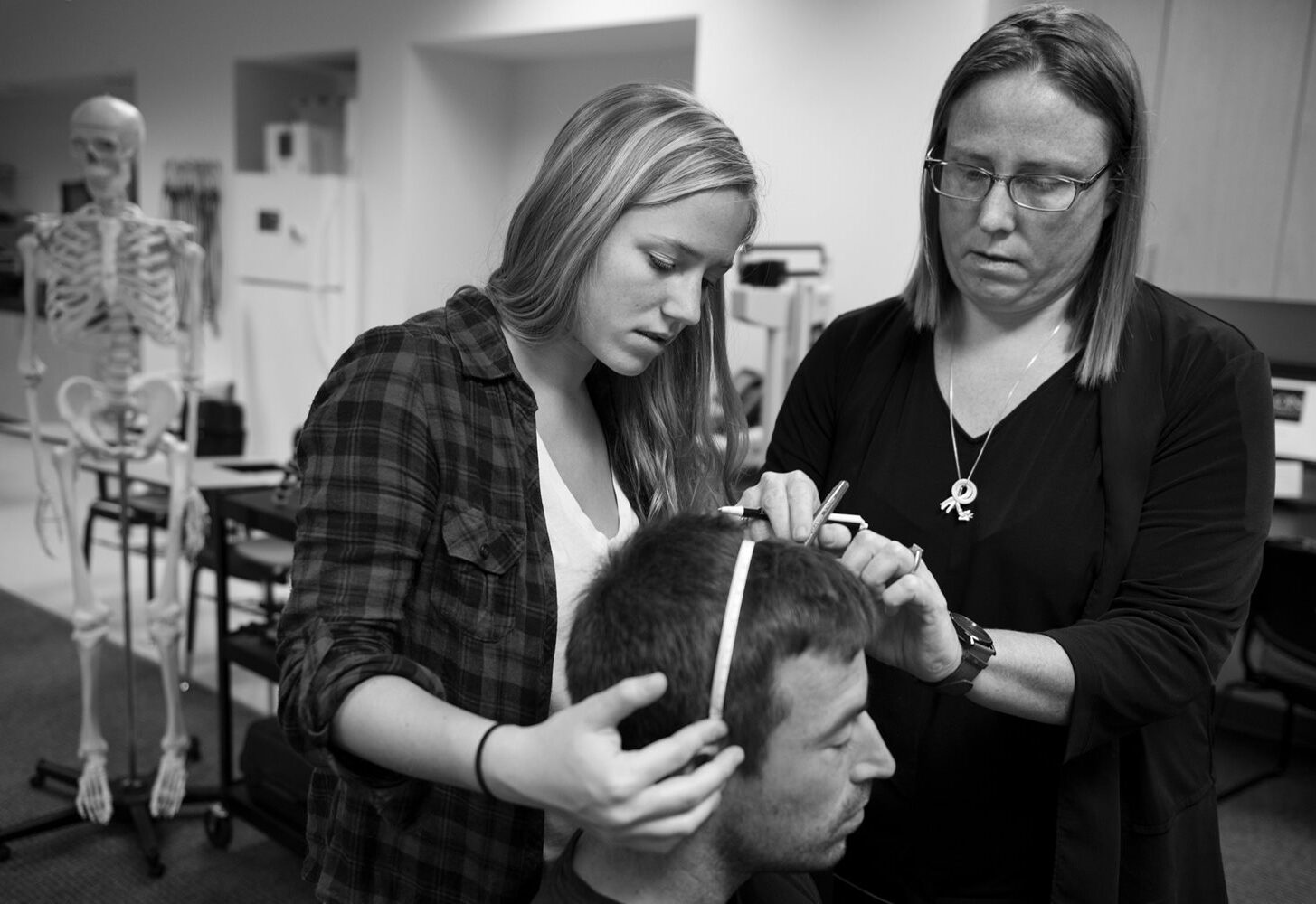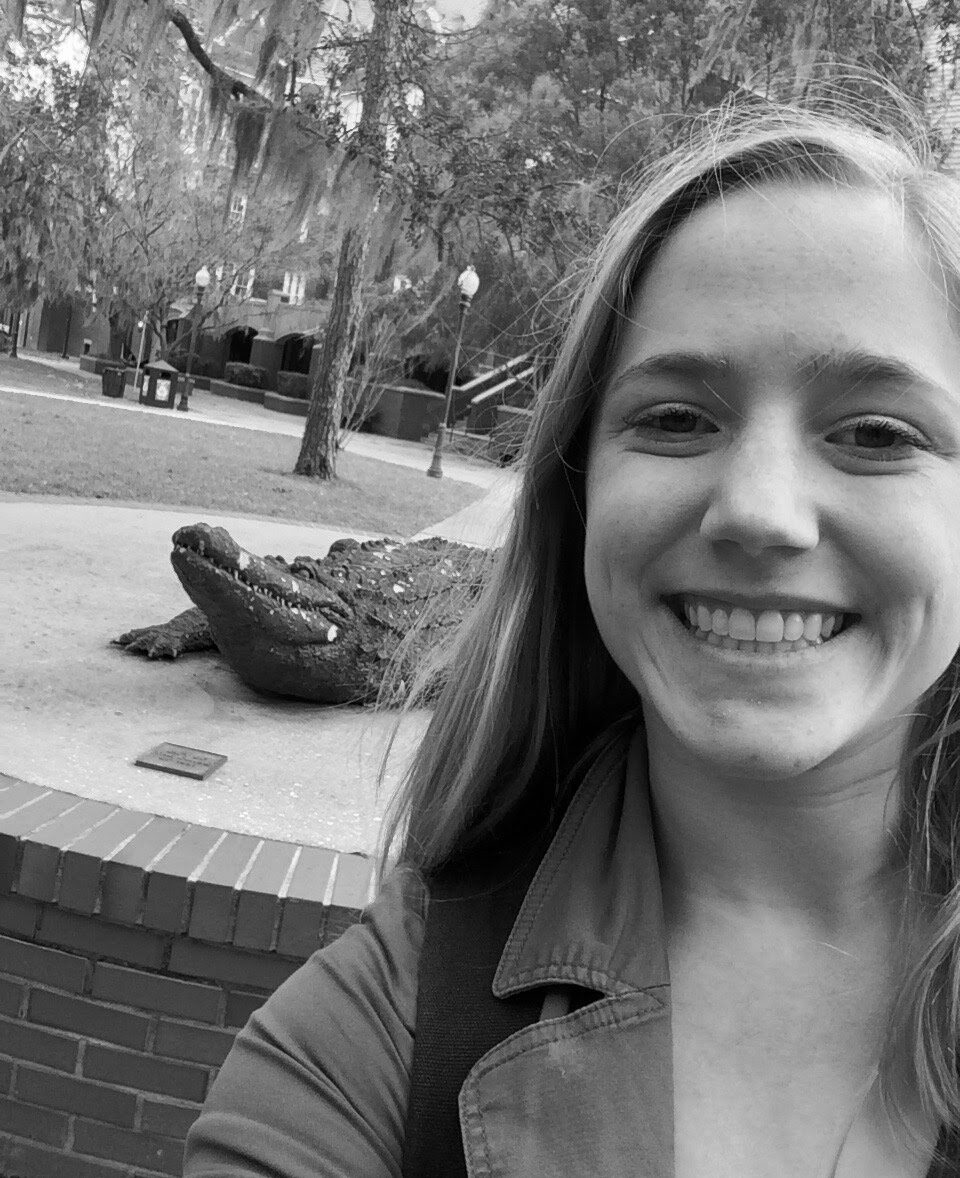Kathleen Hupfeld, PhD studies how older age and disease
change our brains
I completed my PhD in December 2021, and in January 2022, I started as a postdoctoral fellow at the Johns Hopkins University School of Medicine. My work at Hopkins focuses on development and application of novel MR spectroscopy methods to better understand how brain chemicals change with advancing age and disease.
WHERE I STARTED
Inspired by Special Olympics athletes
Through coaching Special Olympics teams, volunteering in therapeutic horseback riding, and interning in several rehab and neurology clinical settings, I became fascinated with how the brain controls movement — how folks learn new or adaptive motor skills and how they regain movement abilities in the face of disease. These interests led me to seek out both clinical and research opportunities as an undergraduate student at Elon University in North Carolina, as I explored possible career paths.
UNDERGRADUATE RESEARCH
Noninvasive brain stimulation
I first became involved in research as an undergraduate student, working with Dr. Caroline Ketcham, Professor of Exercise Science at Elon University. Under Dr. Ketcham’s fantastic mentorship, my work at Elon evolved from designing a small-scale mandatory honors thesis project to conceiving, implementing, and publishing multiple studies. In this work, we examined how transcranial direct current stimulation (tDCS) can influence motor planning processes in college students and in children with developmental conditions such as Autism Spectrum Disorder. This work sent me to my first international conferences and introduced me to the breadth of neuroscience research. This experience also introduced me to grant writing; as an undergrad, I acquired a $15,000 internal grant for my thesis work, as well as an NSF GRFP fellowship for graduate school. This 4-year comprehensive experience got me hooked on research and encouraged me to pursue a PhD in motor neuroscience.

ONE YEAR AS A WOLVERINE
First-year PhD work at the University of Michigan
I jumped straight from undergrad to a PhD program. I worked with Dr. Rachael Seidler and Dr. Priti Shah at the University of Michigan in the Cognition and Cognitive Neuroscience program. I began working on several of Dr. Shah’s ADHD
projects, including studies examining hyperfocus in ADHD. Understanding brain and behavioral differences in folks with ADHD remains one of my research interests. I hope to continue work developing ways to measure,
induce, and understand the neural mechanisms of hyperfocus, with the ultimate goals of designing targeted interventions for these individuals. The Adult Hyperfocus Questionnaire that I designed with Dr. Shah has
become my most-cited paper and, to our knowledge, the most commonly-used hyperfocus scale in the literature.
My other line of work at University of Michigan, with Dr. Seidler, involved examining how genetic markers of dopamine function might predict walking and balance performance in healthy older adults. I examined a large,
population-based dataset (the US Health and Retirement Study) which includes thousands of older US adults. I published a cross-sectional analysis of these data, and gained critical bioinformatics skills for working with ‘big’ data.
As my snow-filled year in Michigan came to an end, I made plans to move to the University of Florida with Dr. Seidler. Following her 15-year career at U of M, Dr. Seidler had taken a position in the Sunshine State, and I was eager to follow.

DOCTORAL WORK
Learning to study spaceflight and aging brains
In the summer of 2017, I made the move from Ann Arbor, MI to Gainesville, FL with Dr. Seidler. I went from being a first-year grad student in a relatively big lab to the ‘senior’ (hah!) grad student in a new lab at a new university. Although challenging, this move provided me with the unique experience of helping to establish a new lab — but under the guidance of a very experienced and extremely well-funded PI. This background will undoubtedly be helpful in setting up my own future lab.
My time at UF was extremely productive. I authored >20 papers in total as a doctoral student and received a major, 6-year NIH grant (F99/K00).
After spending part of my first summer taking a human neuroanatomy course (read: handling human brains and spinal cords in the med school basement), I started to learn MRI analyses by working on Dr. Seidler’s NASA-funded spaceflight
and analog studies. This work became one of my main lines of doctoral research. Not only did it help me learn how to process “tricky”, longitudinal neuroimaging data, it also got at one of my main research interests — understanding how the brain control movement and how perturbations (e.g., microgravity) affect the neural control of movement. This
work was incredibly exciting, and will hopefully contribute to humans and their brains traveling safely to Mars in the coming years!
My other line of doctoral work focused on brain aging. My projects involved collecting multimodal neuroimaging data: structural MRI (voxel-based morphometry and DWI), functional MRI (task-based and resting-state MRI), and MR spectroscopy (GABA- and GSH-edited data), as well as transcranial magnetic stimulation (muscle silent periods) and movement analysis data (using inertial measurement units and marker-based motion capture). I worked with young and healthy older adults, up to age 85, aiming to comprehensively characterize brain changes with normal aging, and how these brain changes related to preservation (or not) of walking and balance abilities in aging.
This is the work was supported by my NIA F99 award, and this is the primary work that I am continuing as a postdoc with my NIA K00 award.

WHERE I’M HEADED
MR spectroscopy, aging, Alzheimer’s disease…and beyond
In January 2022, I moved back home to Baltimore, MD to start as a postdoctoral fellow in the Department of Radiology and Radiological Science with Dr. Richard Edden at the Johns Hopkins University School of Medicine.
My first projects at Hopkins have focused on applying novel MR spectroscopy sequences to understand brain changes in age-related disease. My first study characterized brain metabolites in subtypes of Primary Progressive Aphasia (PPA),
a rare untreatable disorder that impairs language in people as young as 40. I’m currently following up on this PPA work, and working on a large clinical trial applying our new sequences to Alzheimer’s disease patients pre/post brain
stimulation therapy.
Looking ahead, my postdoctoral work as a whole will focus on both development and application of novel MR spectroscopy methods. Our work has the potential to provide unprecedented insight into brain chemistry across the lifespan and in disease, and will do so totally noninvasively — using only an MRI scanner.
As an independent investigator, I want to continue leveraging MRS and MRI to understand brain changes in aging and disease — with the ultimate goals of uncovering new drug targets and biomarkers for previously untreatable diseases.

